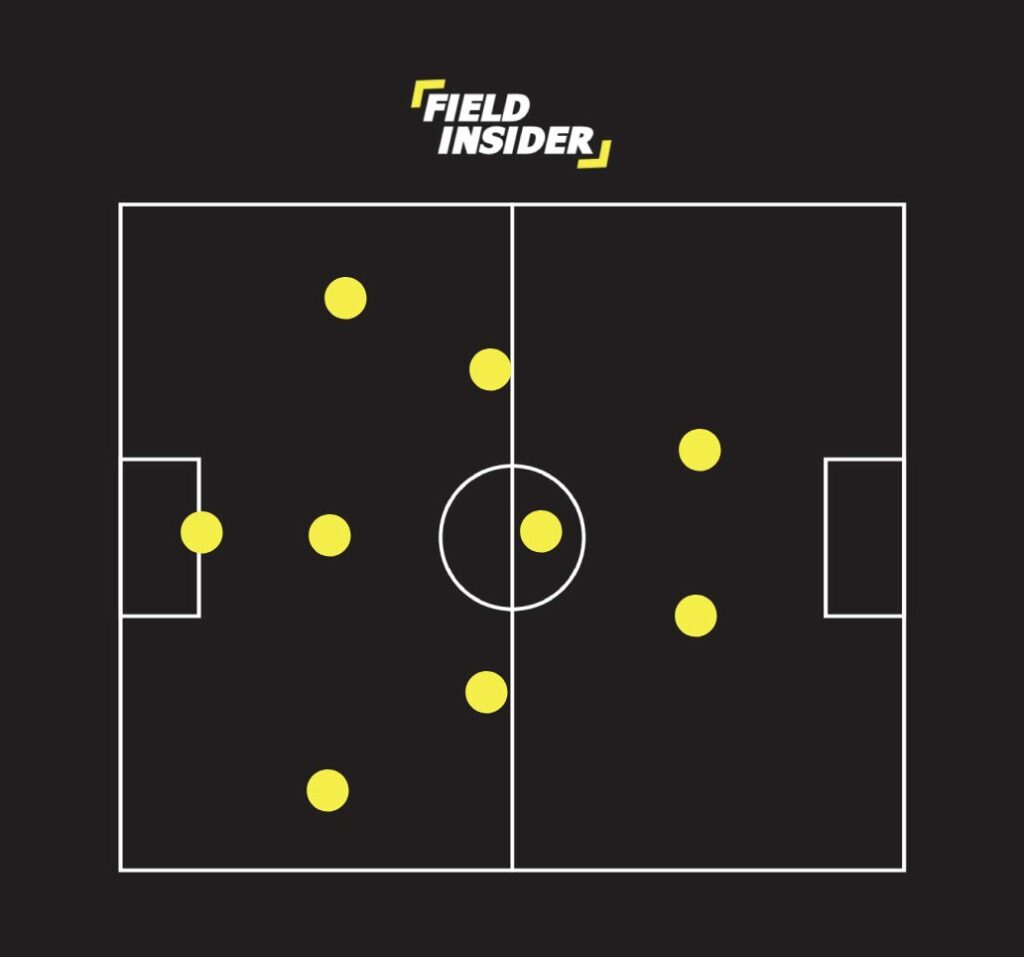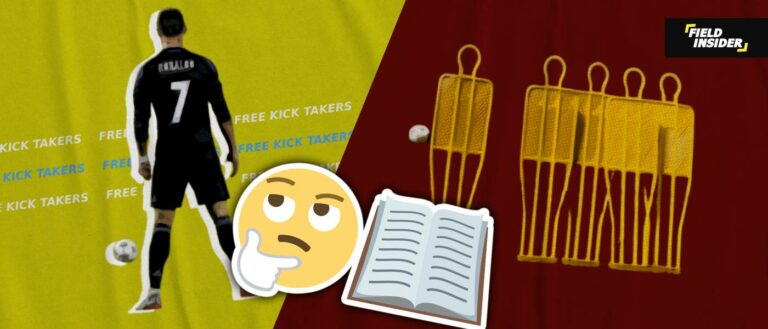9-A-Side Football Rules: All That You Need To Know
Introduction
Football is celebrated worldwide for its diverse formats that cater to different player counts and environments. 9-a-side football stands out as a thrilling variation that combines the essence of the traditional game with unique rules and configurations.
This format is particularly appealing for its development of player skills and tactical understanding. Understanding the rules of 9-a-side football is crucial for players, coaches, and enthusiasts to fully appreciate and excel in this variant.
In this article, we delve into the history, rules, strategies, and nuances of 9-a-side football. Whether you are looking to transition into this format or simply aiming to broaden your football knowledge, this guide provides comprehensive details to enhance your understanding and enjoyment of the game.

Key Takeaways
| Aspect | Details |
|---|---|
| Game Format | 9-a-side football is played on a smaller pitch with fewer players, emphasizing skill development and tactical acumen. |
| Rule Variations | Modifications include field size, team composition, match duration, and more. Refer to the official 9-a-side football rules for comprehensive details. |
| Strategic Depth | Teams must adjust their tactics and player roles due to the reduced team size, offering different challenges and strategies compared to traditional football. |
History of 9-A-Side Football
Origins and Development
9-a-side football originated as a practical solution for teams that lacked the numbers or resources to field the traditional 11 players required for standard football. This format allowed for smaller groups to participate in organized games, providing a foundation for team sports in smaller communities.
Over time, these informal matches evolved, adopting more formal rules to enhance competition and fairness, making the game suitable for a variety of playing environments and contributing to its initial spread among football enthusiasts.
Evolution of the Game
With its rising popularity, 9-a-side football began to see more formal recognition, with specific rules and structures developed to govern the game. This process was instrumental in moving the game from informal schoolyards to more competitive leagues, especially within youth football circuits.
The adaptation of the game to include official rules helped maintain consistency and safety for players, fostering a competitive yet inclusive environment. As a result, it has become a staple in training and developing young talent, providing a critical stepping stone towards the full 11-a-side game.
Popularity and Growth Worldwide
9-a-side football has seen significant growth internationally, becoming a popular format for youth leagues & adult amateurs seeking a more accessible version of the game. Its appeal lies in the balance it offers between the tactical complexity of 11-a-side and the quick, skill-oriented nature of smaller formats.
The format’s versatility makes it ideal for various tournaments and leagues around the world, promoting football development at all levels and providing players with numerous opportunities to hone their skills in a structured yet dynamic setting.
Basic Rules of 9-A-Side Football
Field Dimensions and Layout
The pitch for 9-a-side football is notably smaller than that used in 11-a-side games, typically about 60-70% of a full-size pitch. This reduction in size speeds up gameplay and encourages more frequent player interactions.
Smaller fields also make the game more accessible, requiring less space—a particularly advantageous feature in urban or densely populated areas.
Team Composition
In 9-a-side football, each team consists of eight outfield players and one goalkeeper. This setup not only intensifies the importance of each player’s role but also enhances individual player development.
The reduced team size encourages players to be more versatile, often handling multiple responsibilities, which can accelerate skill acquisition and tactical understanding.
Duration of Matches
Matches are generally shorter in 9-a-side football, usually consisting of two halves of 25-30 minutes each. The shorter match length keeps the game intense and engaging, demanding higher concentration and physical effort from players.
This format is especially beneficial in tournaments or leagues where multiple games are played in a single day.
Scoring System
In 9-a-side football, the scoring adheres to the standard rules seen in larger formats: players score goals by getting the ball into the opponent’s net.
However, the reduced number of players and smaller pitch size can change the dynamics of scoring, often leading to quicker transitions and more direct approaches to the goal.
Offside Rule
In 9-a-side football, the offside rule is adapted to suit the smaller field. Typically, officials set the offside line at the halfway line instead of using the position of the second-last opponent to determine it.
This modification helps maintain a fast-paced game flow and reduces stoppages, making the game more continuous and lively.
Substitution Regulations
Substitution rules in 9-a-side football are usually more flexible compared to the traditional game.
Rolling substitutions are often allowed, enabling teams to manage player fatigue and maintain a high level of intensity throughout the game. This flexibility is particularly advantageous during tournaments where teams may face several matches in a short period.
Key Differences from Traditional Football
Reduced Number of Players
The most obvious difference in 9-a-side football is the reduced number of players compared to the traditional 11-a-side game. This alteration significantly impacts the gameplay, as each player has more ground to cover and a greater part to play in both offensive and defensive actions.
The smaller team size emphasizes the importance of each player’s contribution to the team’s overall performance and strategy.
Adjustments in Tactics and Gameplay
With fewer players on the field, tactical adjustments are crucial in 9-a-side football. Teams must optimize their formations and playing styles to exploit the smaller pitch and reduced team size.
This often leads to more dynamic and fluid playing styles, with players required to adapt to multiple roles and responsibilities during the game. These tactical nuances can provide a rich learning environment for developing tactical intelligence and flexibility.
Impact on Player Positions and Roles
In 9-a-side football, players often find themselves taking on hybrid roles, needing to defend and attack as the game demands. This fluidity allows players to develop a broader set of skills but also requires a deeper understanding of the game and higher levels of fitness.
The reduction in specialization encourages players to be more well-rounded, enhancing their adaptability and understanding of various positions on the field.
Strategies and Tactics
Formation Options
Choosing the right formation is crucial in 9-a-side football, as it can significantly influence both defensive stability and offensive potency. Popular choices like the 3-4-1 formation and the 3-3-2 formation are favored for their balance and flexibility.
These formations allow teams to adapt quickly between defense and attack, ensuring that they can respond effectively to the dynamics of the game.
Offensive and Defensive Strategies
Offensive strategies in 9-a-side football often emphasize quick passes and utilizing the wings to stretch the opposition’s defense. Defensively, teams must remain compact and shift as a unit to prevent gaps.
The ability to switch rapidly from defense to attack is crucial, often leveraging counter-attacks to exploit spaces left by opposing teams who may overcommit forward.
Importance of Teamwork and Communication
In a game with fewer players, the importance of teamwork and communication is magnified. Each player’s actions can have a more pronounced effect on the outcome of the game, making it essential for teams to work cohesively.
Effective communication helps ensure that players are aligned in their roles, responsibilities, and in response to changing game situations, fostering a more synchronized team performance.
Skill Requirements
Physical Attributes
Physical fitness is paramount in 9-a-side football due to the increased space each player covers. Stamina and agility are crucial as players need to maintain a high level of activity throughout the shorter, yet more intense matches.
The ability to accelerate quickly and sustain pace over time is also vital, given the frequent transitions between offensive and defensive play.
Technical Skills
Technical proficiency is key in 9-a-side football, where the smaller team size and pitch area can amplify the importance of individual skills. Players must exhibit excellent ball control, precise passing, and the ability to execute tight dribbles and quick shots.
High skill levels in these areas can significantly influence a team’s ability to control the game and create scoring opportunities.
Mental Aspects
Mental toughness and tactical awareness are essential in 9-a-side football. Players must be able to make quick decisions and read the game effectively, understanding when to press, when to hold back, and how to best support their teammates.
The mental agility to adapt to rapidly changing situations on the pitch can differentiate between good and great players in this format.
Benefits of Playing 9-A-Side Football
Development of Individual Skills
The smaller team size in 9-a-side football ensures more touches on the ball for each player, fostering the development of individual skills such as dribbling, passing, and shooting. This increased involvement in the game helps players enhance their technical abilities faster than they might in larger-sided games.
Enhanced Tactical Understanding
Playing 9-a-side football encourages a deeper understanding of tactical play. With fewer players on the field, each one often has to play multiple roles and make quick tactical decisions. This environment is excellent for developing a player’s ability to read the game and react strategically.
Opportunities for Players of All Levels
9-a-side football is accessible to players at various skill levels and provides a platform for everyone from beginners to more advanced players to compete and improve. The format’s adaptability makes it suitable for different age groups, skill levels, and competitive environments, ensuring a broad range of participation.
Challenges and Considerations
Potential Issues with Smaller Teams
The reduced number of players in 9-a-side football can lead to challenges such as greater physical demand on each player and the need for higher levels of stamina and versatility. Players must be able to perform well across various aspects of the game, which can be a challenge for those not accustomed to such demands.
Adaptation for Traditional Football Players
Players accustomed to the traditional 11-a-side format may find adapting to 9-a-side challenging. The faster pace and increased responsibility can initially be difficult as players adjust to having more space to cover and being more involved in the play.
Overcoming Rule Misconceptions
There can be confusion about the specific rules of 9-a-side football, particularly regarding offside regulations and substitutions. Misunderstandings can impact the flow of the game and the players’ enjoyment.
Ensuring all participants are clear on the rules before play begins is crucial for a smooth, enjoyable game experience.
Conclusion
9-a-side football offers a dynamic, engaging variation of the traditional game, emphasizing skill development and tactical awareness. Its unique format caters to various skill levels, making it accessible and beneficial for a wide range of players.
By understanding its rules and embracing its challenges, players can significantly enhance their football skills. Whether you’re new to the sport or seeking to refine your abilities, 9-a-side football provides an excellent platform to grow as a player and enjoy the beautiful game in a fresh, exciting way.








